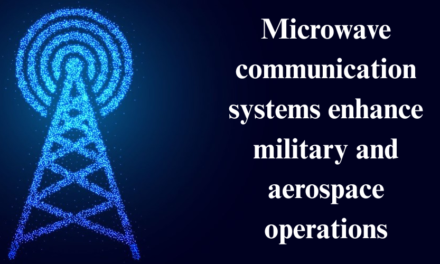Green propulsion technologies refer to advanced propulsion systems designed to reduce environmental impact by minimizing greenhouse gas emissions, toxic pollutants, and resource consumption. These technologies focus on leveraging sustainable fuels, improving efficiency, and adopting cleaner energy sources. In the aerospace and defense sectors, green propulsion is critical for achieving sustainability, operational efficiency, and compliance with environmental regulations. Here’s an in-depth look:
Key Green Propulsion Technologies
1. Sustainable Aviation Fuels (SAFs)
- Description:
- SAFs are bio-based or synthetic fuels made from renewable sources like waste oils, algae, agricultural residues, or captured CO₂.
- Benefits:
- Up to 80% reduction in lifecycle carbon emissions.
- Compatible with existing jet engines and infrastructure.
- Examples:
- Hydroprocessed Esters and Fatty Acids (HEFA), Fischer-Tropsch fuels, Alcohol-to-Jet (ATJ).
2. Electric Propulsion
- Description:
- Propulsion systems powered by electricity from batteries, fuel cells, or solar panels.
- Types:
- Battery-Electric: Uses advanced battery technologies for small aircraft and short-range missions.
- Hybrid-Electric: Combines electric motors with traditional engines for increased range and flexibility.
- Solar-Electric: Utilizes solar panels for high-altitude, long-endurance unmanned aerial vehicles (UAVs).
- Benefits:
- Zero in-flight emissions (for fully electric systems).
- Reduced noise pollution and lower maintenance costs.
- Examples:
- Eviation’s Alice electric aircraft, NASA’s X-57 Maxwell.
3. Hydrogen Propulsion
- Description:
- Hydrogen is used as a fuel, either in modified combustion engines or in fuel cells to generate electricity.
- Types:
- Combustion: Hydrogen burned in turbines for high-thrust applications.
- Fuel Cells: Hydrogen reacts with oxygen in fuel cells to produce electricity for electric motors.
- Benefits:
- Zero CO₂ emissions, with water vapor as the main byproduct.
- High energy density suitable for longer-range aircraft.
- Examples:
- Airbus ZEROe concept aircraft, ZeroAvia hydrogen-powered planes.
4. Hybrid Propulsion Systems
- Description:
- Combines traditional combustion engines with electric motors or other cleaner energy sources.
- Benefits:
- Reduces fuel consumption and emissions.
- Provides operational flexibility and redundancy.
- Examples:
- Ampaire’s hybrid-electric Cessna, Airbus E-Fan X.
5. Advanced Propulsion for Spacecraft
- Electric Propulsion:
- Uses ion thrusters or Hall-effect thrusters powered by solar or nuclear energy.
- Highly efficient for long-duration space missions.
- Green Monopropellants:
- Non-toxic propellants like ADN (Ammonium Dinitramide)-based fuels replace hydrazine, a hazardous chemical.
- Examples: Swedish ECAPS LMP-103S fuel.
- Methane Propulsion:
- Methane is cleaner than traditional RP-1 kerosene and offers better reusability.
- Examples: SpaceX’s Raptor engine, Blue Origin’s BE-4.
6. Aerodynamic Integration with Propulsion
- Boundary Layer Ingestion (BLI):
- Engine placement to ingest and re-energize airflow reduces drag and improves efficiency.
- Distributed Electric Propulsion (DEP):
- Multiple electric motors distributed along the airframe improve efficiency and reduce noise.
Importance of Green Propulsion for Aerospace and Defense
1. Environmental Benefits
- Carbon Emission Reduction:
- Aviation contributes ~2-3% of global CO₂ emissions. Green propulsion technologies significantly reduce the carbon footprint of aircraft and spacecraft.
- Compliance with Regulations:
- Aligns with international climate agreements (e.g., Paris Agreement) and aviation-specific initiatives like ICAO’s CORSIA (Carbon Offsetting and Reduction Scheme for International Aviation).
- Toxic Pollution Reduction:
- Replacement of toxic fuels (e.g., hydrazine) with green alternatives improves safety and reduces environmental hazards.
2. Operational Efficiency
- Fuel Savings:
- More efficient propulsion systems reduce fuel costs, which are a significant portion of airline operating expenses.
- Extended Range:
- Improved fuel efficiency and alternative energy sources enable longer missions with fewer refueling stops.
- Reduced Maintenance:
- Electric and hydrogen systems have fewer moving parts, reducing wear and tear.
3. Strategic and Tactical Advantages
- Quieter Operations:
- Reduced acoustic signatures improve stealth for defense applications.
- Reduced Logistics:
- On-site hydrogen production or electric charging infrastructure can simplify supply chains in remote or contested environments.
- Versatility:
- Hybrid systems offer redundancy and adaptability for diverse missions.
4. Technological Leadership
- Innovation-Driven Growth:
- Investments in green propulsion drive advancements in materials, energy storage, and manufacturing.
- Market Competitiveness:
- Aerospace and defense companies adopting green technologies gain a competitive edge in an environmentally conscious market.
5. Sustainability and Public Perception
- Consumer Demand:
- Airlines adopting green propulsion appeal to eco-conscious travelers.
- Corporate Responsibility:
- Defense contractors and aerospace manufacturers demonstrate commitment to sustainability, enhancing their reputations.
Challenges to Green Propulsion Adoption
- Energy Storage Limitations:
- Batteries and hydrogen storage systems need significant improvements in energy density to compete with fossil fuels for long-range applications.
- Infrastructure Requirements:
- Airports, airbases, and spaceports need substantial investments to support SAF, hydrogen, and electric charging networks.
- High Initial Costs:
- R&D and deployment costs for green propulsion systems are higher than traditional technologies, though costs are expected to decrease with scaling.
- Regulatory and Certification Hurdles:
- New technologies must meet stringent safety and performance standards, which can delay deployment.
Future Outlook
- Scaling Sustainable Fuels:
- SAFs and green hydrogen production are expected to scale rapidly with government incentives and private investments.
- Electric Revolution in Regional Aviation:
- Short-haul electric and hybrid-electric aircraft will become common for commuter and regional routes.
- Space Sustainability:
- Green propellants and electric propulsion systems will dominate future satellite and deep-space missions.
- Defense Applications:
- Military UAVs and stealth aircraft will leverage green technologies for improved efficiency and operational stealth.
Conclusion
Green propulsion technologies are crucial for transforming the aerospace and defense sectors into more sustainable and efficient industries. By reducing environmental impact, improving operational efficiency, and meeting regulatory demands, these innovations ensure long-term growth, competitiveness, and alignment with global sustainability goals.
Hashtags
#GreenPropulsionTech #SustainablePropulsion #EcoFriendlyPropulsion #NextGenPropulsionSystems #CleanPropulsionSolutions #SustainableAerospace #DefenseEcoInnovation #GreenDefenseTech #EcoAerospaceAdvancements #DecarbonizingDefense #AdvancedPropulsionTech #SmartGreenEngines #InnovativeFlightPropulsion #ElectricAndHybridEngines #HydrogenPropulsionSystems #LowEmissionEngines #CarbonNeutralPropulsion #GreenAviationTech













